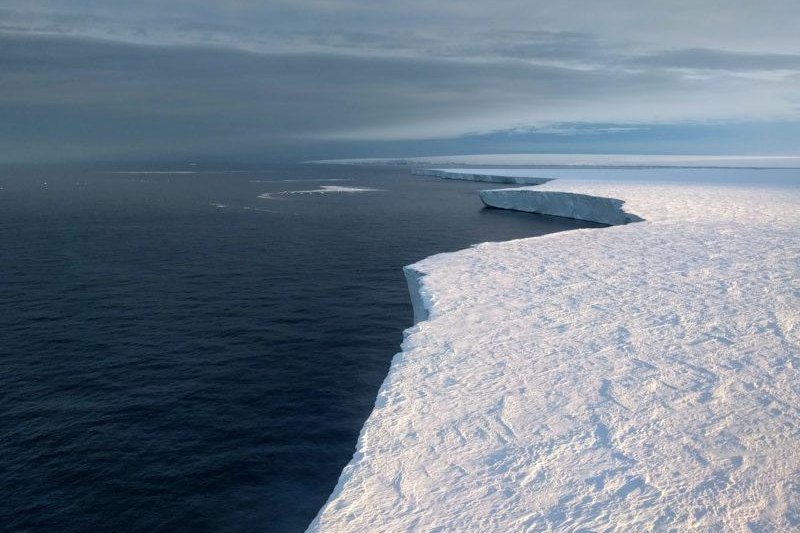Shifting wind patterns caused by climate change are encouraging warm ocean conditions along the coast of Western Antarctica, accelerating melt rates among key glaciers. Photo by Pierre Dutrieux/BAS
Aug. 16 (UPI) -- Human-caused climate change has triggered wind shifts in Antarctica, according to a new study, driving accelerated melting across the continent's west coast.
The research -- published this week in the journal Nature Geoscience -- is the first to draw a direct link between human-induced global warming and Western Antarctica's rapidly melting glaciers.
Scientists have previously shown that influxes of warm coastal water are driving the loss of ice among Western Antarctica's largest glaciers. Previous research has also shown that variable wind patterns dictate the movement of warm and cold water masses.
For the latest study, scientists used satellite observations and climate model simulations to analyze how these wind patterns have changed since 1920. The data showed the wind patterns have shifted as the climate has warmed, yielding more warm ocean conditions.
"The impact of human-induced climate change on the West Antarctic Ice Sheet is not simple. This is the first evidence for a direct link between human activities and the loss of ice from West Antarctica," Paul Holland, researcher with the British Antarctic Survey, said in a news release. "Our results imply that a combination of human activity and natural climate variations have caused ice loss in this region, accounting for around 4.5 centimeters of sea-level rise per century."
When researchers ran models to simulate future wind patterns across the region, they found climate change will continue to trigger wind patterns that promote warm ocean conditions.
"An important finding is that if high greenhouse-gas emissions continue in future, the winds keep changing and there could be a further increase in ice melting," Holland said. "However, if emissions of greenhouse gases are curtailed, there is little change in the winds from present-day conditions. This shows that curbing greenhouse gas emissions now could reduce the future sea-level contribution from this region."
Scientists knew the West Antarctic Ice Sheet is influenced by ten-year climate cycles, but until now, scientists couldn't figure out why the ice sheet's glaciers have begun melting so rapidly over the last few decades. The latest research provided answers.
"These results solve a long-standing puzzle. We have known for some time that varying winds near the West Antarctic Ice Sheet have contributed to the ice loss, but it has not been clear why the ice sheet is changing now," said study co-author Eric Steig, climate scientist at the University of Washington. "Our work with ice cores drilled in the Antarctic Ice Sheet have shown, for example, that wind conditions have been similar in the past. But the ice core data also suggest a subtle long-term trend in the winds. This new work corroborates that evidence and, furthermore, explains why that trend has occurred."
To prevent significant sea level rise, recent studies suggest world governments must act fast. Even if global warming comes to a halt, instabilities in Western Antarctica could continue to drive accelerated melting for a century or more.















